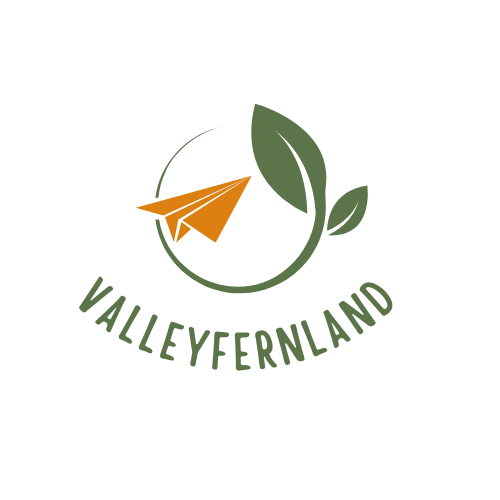In a world where plastic straws are public enemy number one, starting a sustainable living blog business might just be the eco-friendly revolution everyone’s been waiting for. Imagine sharing your passion for green living while making a profit—sounds like a win-win, right? With more people eager to embrace a sustainable lifestyle, your blog could be the guiding light in their quest to save the planet, one recycled bottle at a time.
How to Start a Sustainable Living Blog Business
Sustainable living emphasizes reducing one’s environmental footprint through conscious choices. This approach prioritizes efficient use of resources, minimal waste, and eco-friendly practices.
Definition of Sustainable Living
Sustainable living refers to adopting habits that conserve natural resources for future generations. It encompasses practices such as recycling, reducing energy consumption, and selecting sustainable materials. Individuals often focus on lifestyle changes that promote ecological balance, such as choosing local produce and minimizing single-use plastics. This lifestyle encourages a holistic view of the environment, indicating that every small action contributes to broader ecological well-being.
Importance of Sustainability
Sustainability plays a critical role in addressing global challenges like climate change and resource depletion. Implementing sustainable practices helps preserve biodiversity and maintain natural ecosystems. According to a study by the World Wildlife Fund, humanity’s ecological footprint has exceeded the Earth’s capacity to regenerate resources, signaling urgency for change. By prioritizing sustainability, individuals can improve their quality of life while fostering a healthier planet. Engaging in sustainable actions builds community awareness and inspires collective effort toward a more eco-conscious future.
Planning Your Blog

Planning your blog is crucial for establishing a strong foundation. Focusing on specific aspects leads to clarity in your content strategy.
Defining Your Niche
Defining a niche helps differentiate the blog in a saturated market. Choosing topics like zero waste, eco-friendly products, or sustainable fashion creates targeted content. Identifying a unique angle allows for specialized posts. Research shows niche blogs attract dedicated audiences. Successful blogs often establish authority within their niche, fostering trust and loyalty among readers.
Identifying Your Audience
Identifying the audience sharpens blog focus. Understanding demographics, interests, and pain points guides content creation. Engaging with potential readers via social media or surveys reveals valuable insights. Knowing the audience’s preferences shapes the blog’s tone and topics. Analyzing competitors aids in determining what resonates most with similar audiences. Tailoring content to specific groups results in higher engagement and readership.
Setting Up Your Blog
Creating a sustainable living blog requires careful setup to maximize its potential. Start with essential choices about platforms and naming.
Choosing a Blogging Platform
Selecting a blogging platform significantly impacts the management and growth of the blog. Popular choices include WordPress, Blogger, and Squarespace. WordPress offers flexibility and a vast array of plugins, making it ideal for customization. Blogger provides simplicity for beginners, while Squarespace stands out for its stunning templates. Assess the technical skills and long-term goals before deciding, as each platform caters to different needs.
Selecting a Domain Name and Hosting
Domain names represent the blog’s identity and should reflect its focus on sustainability. Aim for a name that is catchy, relevant, and easy to remember. Use 5 to 15 characters for optimal length. Additionally, reliable hosting is crucial for performance and uptime. Consider options like Bluehost, SiteGround, or HostGator, known for their user support and reliability. Think about budget constraints and technical requirements when selecting hosting, as these factors influence the blog’s efficiency and growth.
Creating Quality Content
Creating quality content is crucial for a sustainable living blog business. Focus on producing informative, engaging, and relevant posts that resonate with the target audience.
Types of Content to Consider
Consider various content types to diversify your posts. Blog articles can cover tips for sustainable practices, DIY projects for eco-friendly home improvements, and product reviews of green products. Infographics serve as engaging visual representations of sustainability statistics, while videos can demonstrate eco-friendly techniques or interviews with sustainability experts. Additionally, recipes for plant-based meals can attract readers interested in dietary changes for environmental benefits. Relying on these diverse formats keeps the content fresh and appealing.
Tips for Engaging Writing
Engaging writing captures the reader’s interest. Start with strong headlines that clearly convey the topic of each post. Use conversational tones to connect with the audience, making information relatable and accessible. Empathy plays a role; understand the audience’s struggles and provide actionable solutions. Utilize subheadings for better organization, helping readers navigate content easily. Include personal anecdotes or case studies; real-life examples create relatability and encourage discussions. Prioritize clarity in every sentence, ensuring readers grasp the message without confusion.
Monetizing Your Blog
Monetizing a sustainable living blog effectively turns passion into income. Multiple strategies can maximize revenue opportunities.
Affiliate Marketing Strategies
Affiliate marketing presents an excellent way to generate income. Bloggers can collaborate with eco-friendly brands, promoting products through unique referral links. For instance, sharing affiliate links for zero-waste products can lead to commission payments upon successful sales. Additionally, incorporating product recommendations within blog posts enhances credibility and trust with readers. Using well-placed banners on the blog or social media platforms boosts visibility. Integrating affiliate programs like Amazon Associates or individual brand partnerships can provide diverse options for earnings. Regularly updating affiliate content ensures relevance, keeping readers engaged and increasing conversion potential.
Selling Products or Services
Selling products or services allows direct income generation. Bloggers can create digital products, like e-books or guides, focused on sustainable living practices. For example, a guide on reducing plastic use can attract readers looking to minimize waste. Offering workshops or webinars also provides valuable insights while generating revenue. Merchandise featuring eco-friendly slogans or designs can appeal to an audience passionate about sustainability. Additionally, collaborating with local businesses for co-branded products can expand reach and establish community ties. Promoting these offerings through social media and newsletters encourages audience participation and strengthens the blog’s brand.
Promoting Your Blog
Promoting a sustainable living blog effectively enhances visibility and attracts a dedicated audience. Various strategies can amplify reach and engagement.
Social Media Marketing
Using social media platforms effectively increases blog traffic. Create accounts on popular sites like Instagram, Facebook, and Pinterest. Share visually appealing content such as eco-friendly tips and before-and-after photos of sustainable projects. Engage followers with regular posts, polls, and contests, encouraging them to share their experiences. Hashtags related to sustainable living, like #ZeroWaste and #EcoFriendly, expand the audience even further. Tailor content for each platform, focusing on imagery for Instagram and discussions on Facebook. Consistent interaction fosters a community that supports and shares the blog’s message.
Networking with Other Bloggers
Building relationships with other bloggers can enhance credibility and audience reach. Connect with individuals who share similar sustainability values and target audiences. Collaborating on guest posts, social media takeovers, or joint projects increases exposure for both parties. Sharing each other’s content often leads to cross-promotion benefits, significantly expanding readership. Participating in blogging communities or forums fosters connections and encourages knowledge sharing. Engaging in conversations at local events raises awareness and establishes a presence within the eco-conscious community. Networking elevates the blog’s profile and cultivates meaningful relationships within the niche.
Collective Movement Toward
Starting a sustainable living blog business is a rewarding journey that combines passion with purpose. By sharing knowledge and insights on eco-friendly practices, bloggers can inspire others while contributing to a healthier planet.
With the right planning and a clear focus on a niche, it’s possible to create engaging content that resonates with an audience eager to make a difference. Implementing effective monetization strategies ensures that this passion project can also generate income.
Finally, promoting the blog through social media and networking within the eco-conscious community can amplify its reach and impact. Embracing sustainable living not only enhances personal fulfillment but also fosters a collective movement toward a more sustainable future.

